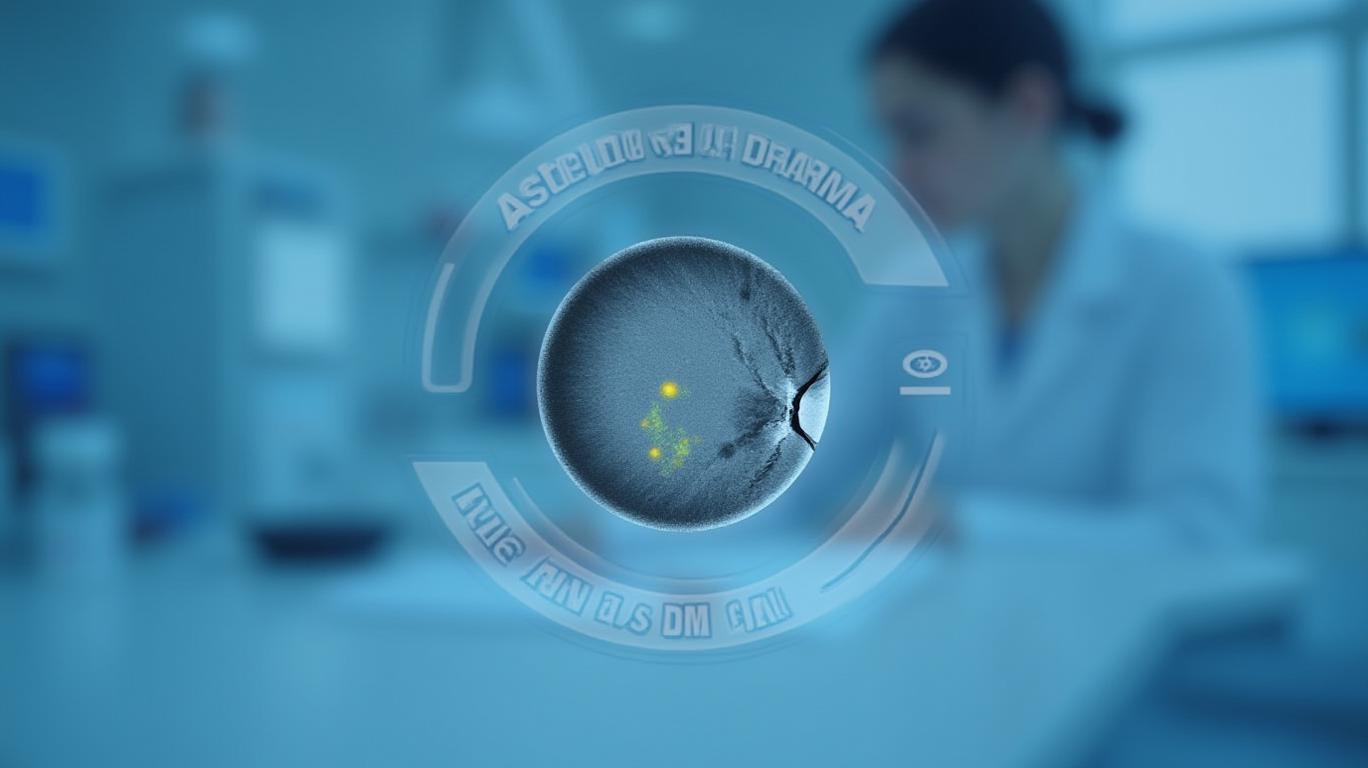Astellas' Geographic Atrophy Data Presentations: A Strategic Move in a Crowded Ophthalmology Market
Astellas Pharma’s upcoming presentations of new data on geographic atrophy (GA) at the 2025 Association for Research in Vision and Ophthalmology (ARVO) and Retina World Congress (RWC) meetings signal a pivotal moment in the fight against this blinding disease. The company’s focus on long-term efficacy and patient-centric outcomes for its C5 inhibitor IZERVAY™ (avacincaptad pegol) positions it at the forefront of a highly competitive field. However, investors must weigh this progress against an expanding pipeline of therapies targeting diverse mechanisms and delivery methods.

The Science Behind Astellas’ Momentum
At ARVO (May 4–8) and RWC (May 8–11), Astellas will showcase data from its GATHER Phase 3 trials, emphasizing two critical areas:
1. Biomarkers & Disease Mechanisms: Analyses of imaging data (e.g., ellipsoid zone integrity) aim to refine early GA detection and predict vision loss.
2. Patient Experience: Qualitative studies across four countries highlight how GA impacts mental health and daily life, underscoring the need for therapies that preserve quality of life.
Key findings include a 2-year safety profile for IZERVAY and biomarker correlations with disease progression. These data could strengthen its position as a first-line therapy for GA secondary to age-related macular degeneration (AMD), a condition affecting over 160,000 Americans annually.
A Competitive Landscape in Flux
While IZERVAY is already FDA-approved, rivals are advancing rapidly:
- ALK-001 (Alkeus): An oral vitamin A analog in Phase 3 trials showed a 15% reduction in GA growth, offering convenience over monthly injections.
- ANX007 (Annexon): A C1q inhibitor in Phase 3 (ARCHER II) demonstrated a 74% reduction in severe vision loss compared to placebo in Phase 2 trials.
- AVD-104 (Aviceda): A nanoparticle therapy in Phase 2/3 trials achieved a 48% reduction in GA growth and vision gains of up to 6.5 letters, potentially outperforming IZERVAY in head-to-head trials (results expected Q4 2025).
Market Potential and Risks
The global GA treatment market is projected to grow at a CAGR of 15% through 2030, driven by aging populations and unmet needs. Astellas’ early approval in the U.S. (August 2023) and Japan’s conditional NDA submission offer a revenue runway. However, risks include:
- Mechanistic Diversification: Competitors targeting mitochondria (elamipretide), gene therapy (JNJ-1887), or photoreceptor protection (RG6501) could redefine treatment paradigms.
- Delivery Innovation: Oral therapies (e.g., ALK-001, tinlarebant) and implants (e.g., SING IMT) may erode IZERVAY’s share by reducing treatment burden.
Conclusion: A High-Stakes Balancing Act
Astellas’ presentations in 2025 are a critical step toward solidifying IZERVAY’s clinical narrative. The drug’s 2-year safety data and biomarker insights could reassure investors, while patient-reported outcomes may drive real-world adoption. However, the pipeline’s shift toward oral therapies and vision-restoring technologies poses a clear threat.
Key Data Points:
- AVD-104’s Phase 2/3 trial (n=300) comparing it to IZERVAY could deliver a verdict on efficacy by late 2025.
- ANX007’s ARCHER II trial (n=630) may confirm its vision-preserving advantage by 2026.
- The global GA drug market is expected to reach $3.2 billion by 2030, with early movers capturing premium pricing.
Investors should monitor these trials closely. Astellas’ near-term success hinges on leveraging its lead in complement inhibition while preparing for a broader therapeutic landscape. For now, the company’s data presentations are a compelling step—but the finish line remains crowded.


Comments
No comments yet